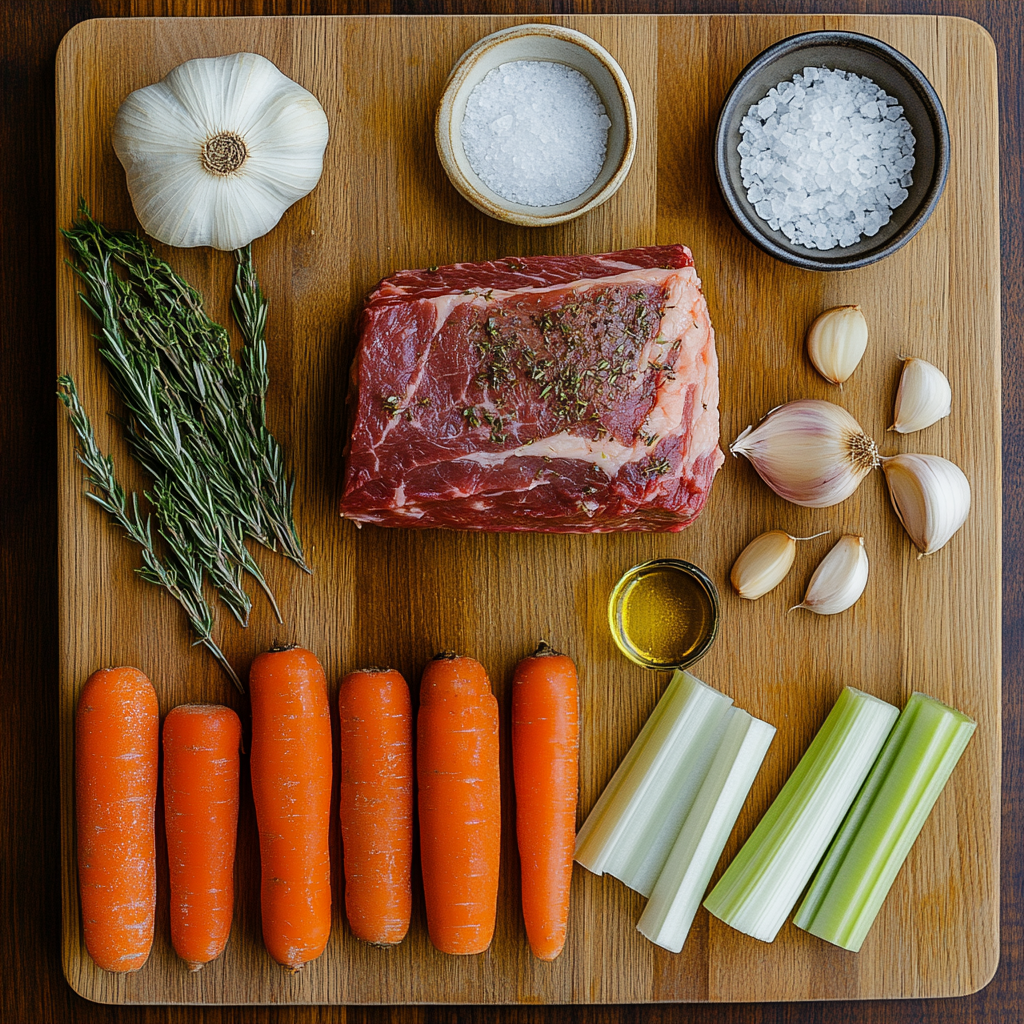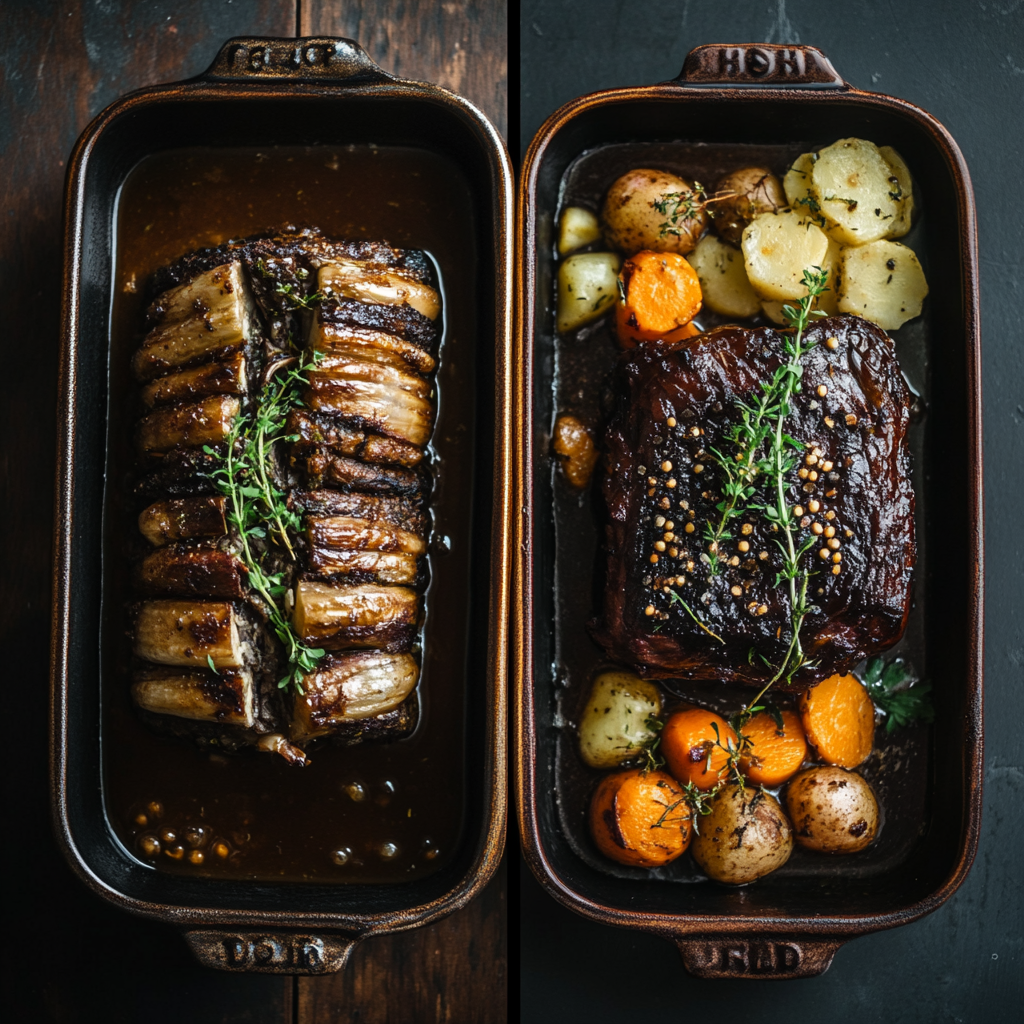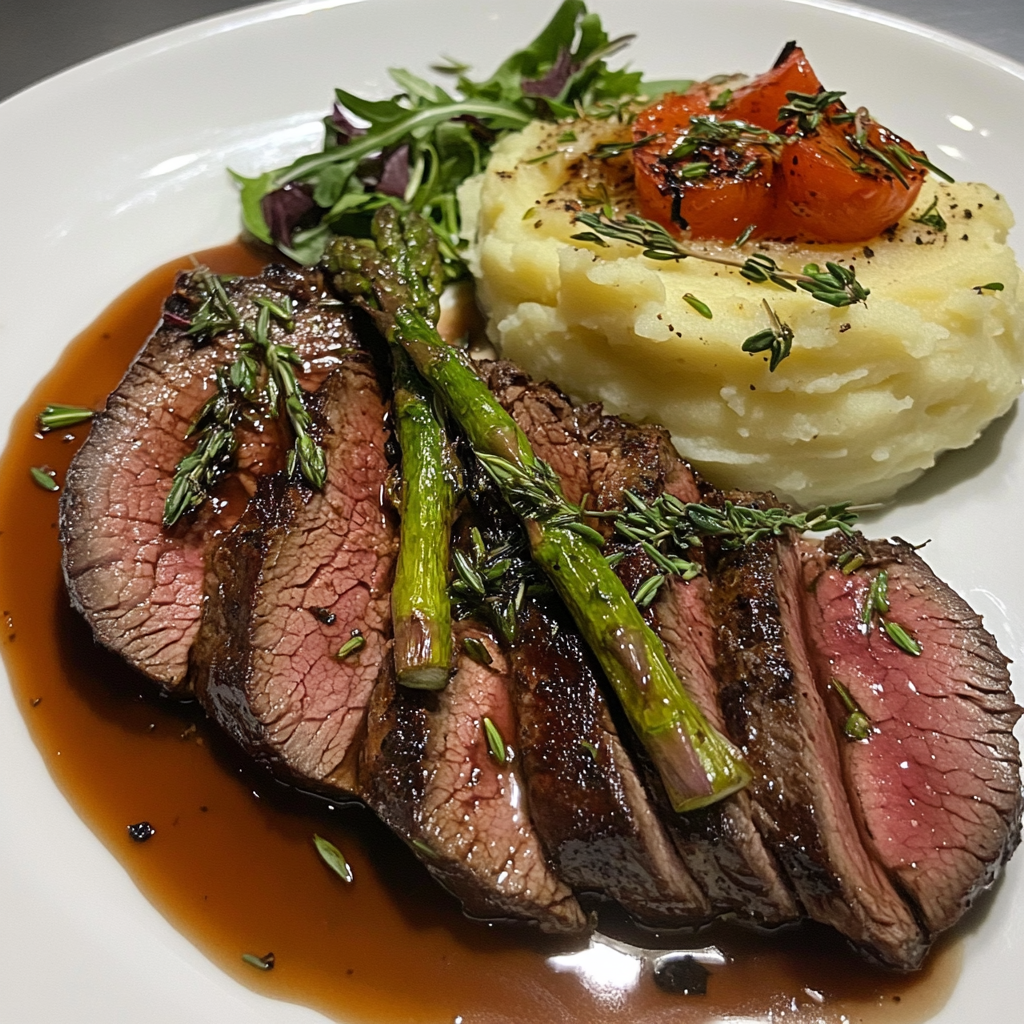French Roast Recipe
Introduction
French roast is more than just a cooking method; it’s a celebration of flavor that transports you to the heart of French cuisine. This classic dish, characterized by its beautifully browned exterior and tender, juicy interior, is perfect for family gatherings, elegant dinner parties, or a comforting meal during chilly evenings. With its impressive presentation and delightful taste, mastering the French roast can elevate your culinary skills and impress guests, making it a staple for anyone passionate about cooking. Whether you’re preparing it for a special occasion or simply enjoying a weeknight dinner, the French roast is an ultimate choice that brings warmth and joy to your dining experience. It pairs wonderfully with a variety of side dishes, making it a versatile option for any meal, especially for dinner enthusiasts looking to impress their loved ones or guests.
Why French Roast?
The French roast method involves cooking beef at high heat initially, which creates a delectable crust while sealing in the juices. Following the high-heat phase, a lower temperature allows the roast to cook evenly, ensuring it remains juicy and flavorful. This technique is not only delicious but also adaptable to different dietary preferences with a few thoughtful substitutions. As you prepare this dish, consider how the rich flavors can complement various sides, from traditional mashed potatoes to fresh salads. Let’s dive deeper into the ingredients, tools, and detailed steps to create this mouthwatering dish that promises satisfaction for any palate.
Ingredients Overview
To create the perfect French roast, you’ll need the following ingredients:
Main Ingredients
- Beef Roast (3-4 pounds): Choose a cut like ribeye or sirloin for optimal flavor and tenderness. The marbling in these cuts ensures a juicy and rich taste.
- Salt: A fundamental seasoning that enhances the meat’s natural flavors. Coarse sea salt or kosher salt is preferred for better texture.
- Black Pepper: Freshly ground pepper adds a sharp, aromatic flavor that complements the richness of the beef.
- Olive Oil: Used for searing the meat and adding richness, olive oil also helps the spices adhere to the roast.
- Garlic (4-6 cloves): Fresh garlic adds depth of flavor and a fragrant aroma that enhances the overall dish.
- Fresh Herbs (such as rosemary and thyme): These herbs impart a delightful fragrance and freshness that balance the richness of the meat.
- Vegetables (carrots, onions, and celery): Used for roasting alongside the beef, these vegetables absorb the flavorful juices and add nutrients to the dish.
- Beef Broth: Essential for deglazing the pan after roasting, this broth helps create a rich sauce that can be served with the roast.
Possible Substitutions
- For a gluten-free option, ensure that any broths or sauces used are certified gluten-free, or make your own broth.
- Substitute olive oil with avocado oil for a higher smoke point, which is beneficial when searing at high temperatures.
- For a vegan adaptation, consider using a plant-based roast or a hearty vegetable-based alternative, accompanied by vegetable broth to create a similar flavor profile.
Understanding ingredient substitutions allows you to cater to different dietary needs and preferences while maintaining the essence of this classic dish.

Tools Needed
To successfully prepare your French roast, you’ll need a few essential kitchen tools:
- Roasting Pan: A sturdy pan that can withstand high temperatures and hold the roast and vegetables securely. Look for one with a rack to elevate the roast for even cooking.
- Meat Thermometer: This tool is crucial for checking the internal temperature of the roast, ensuring it reaches your desired level of doneness.
- Cutting Board: A solid cutting board provides a stable surface for chopping vegetables and herbs, essential for maintaining safety and efficiency in the kitchen.
- Chef’s Knife: A sharp chef’s knife is invaluable for slicing the meat and chopping ingredients, allowing for precise cuts and efficient preparation.
- Tongs: Use tongs to handle the hot roast safely, allowing you to turn and remove it from the pan without piercing the meat and losing juices.
These tools can typically be found in most kitchens, and if you don’t have a roasting pan, a heavy-duty baking sheet lined with aluminum foil can suffice as a practical alternative.
Step-by-Step Instructions
Here’s how to create the perfect French roast:
Step 1: Prepare the Meat
- Season the Roast: Generously rub the beef roast with salt and black pepper on all sides. Allow it to come to room temperature for about 30 minutes. This step is crucial as it helps achieve an even cook throughout the meat, ensuring that the interior is as flavorful and juicy as the exterior.
Step 2: Sear the Roast
- Heat the Olive Oil: In a roasting pan over medium-high heat, add a tablespoon of olive oil. Once hot, carefully place the roast in the pan, allowing it to sear without overcrowding.
- Brown the Meat: Sear the roast for about 3-4 minutes on each side until it’s nicely browned. This process locks in the juices and creates a flavorful crust, which is essential for the overall taste of the dish. Don’t rush this step; patience pays off.
Step 3: Add Aromatics
- Add Garlic and Herbs: Once browned, add crushed garlic cloves and sprigs of fresh herbs around the roast. The garlic will infuse the meat with flavor as it roasts, while the herbs add an aromatic quality that enhances the dish’s overall profile.
- Incorporate Vegetables: Scatter chopped carrots, onions, and celery around the roast. These vegetables not only contribute flavor but also serve as a delicious side that absorbs the savory juices released by the roast.
Step 4: Roast in the Oven
- Roast the Meat: Transfer the roasting pan to a preheated oven at 425°F (220°C) for 15 minutes. This high heat will create a beautiful crust on the roast, ensuring a delightful contrast between the exterior and the tender inside.
- Lower the Temperature: After the initial roasting, reduce the oven temperature to 325°F (160°C) and continue to roast until the internal temperature reaches your desired doneness (135°F for medium-rare, 145°F for medium). This may take about 1.5 to 2 hours, depending on the size of the roast and your oven.
Step 5: Rest and Serve
- Rest the Roast: Once cooked, remove the roast from the oven and cover it loosely with aluminum foil. Allow it to rest for at least 15-20 minutes. Resting is a vital step, as it helps redistribute the juices within the meat, making every slice juicy and flavorful.
- Slice and Serve: Use a sharp knife to slice the roast against the grain. This method ensures that each slice is tender and easy to chew. Serve with the roasted vegetables and pan juices drizzled over the top for added flavor.

Flavor Variations
While the classic French roast is delicious on its own, you can enhance or alter its flavor profile in various exciting ways:
- Spicy French Roast: Add red pepper flakes or cayenne pepper to the seasoning mix for a kick that complements the savory flavors of the beef.
- Asian-Inspired: Incorporate soy sauce, ginger, and sesame oil into the marinade for an umami-rich twist that transforms the traditional roast into something entirely unique.
- Herb-Infused: Experiment with different herbs like oregano, basil, or sage for a refreshing variation that can change the overall taste profile while keeping it aligned with the essence of the dish.
If you’re looking for a lighter option, consider using a smaller cut of meat or even a plant-based roast, allowing for a health-conscious meal without sacrificing flavor. Pair these variations with creative sides for a complete meal experience.

Expert Tips
- Don’t Rush the Searing: Take your time to sear the roast properly. A good crust is essential for flavor and texture, so allow the meat to develop a rich golden-brown color.
- Use a Meat Thermometer: This tool is your best friend when it comes to achieving the perfect doneness. It ensures that your roast is cooked safely and to your preference, avoiding the pitfalls of overcooking.
- Let It Rest: Never skip the resting phase; it significantly enhances juiciness and flavor. Allowing the meat to rest ensures that the juices redistribute, making every slice succulent.
- Save the Juices: Use the pan juices to create a delicious gravy or sauce to serve alongside the roast. This not only adds flavor but also elevates the presentation of the dish.
When making French roast, remember that every step counts. These tips will help you achieve a delicious and beautifully cooked roast every time.
Nutritional Information
French roast is rich in protein and provides essential vitamins and minerals from the accompanying vegetables. A serving (about 3 ounces) typically contains:
- Calories: 250-300
- Protein: 30g
- Fat: 15g
- Vitamins: B12, B6, Iron, Zinc
The addition of vegetables boosts fiber content and contributes various nutrients, making it a balanced meal option. For those monitoring their dietary intake, consider utilizing tools like I NutritionData for a comprehensive breakdown of calories and nutrients per serving, allowing for better meal planning and healthy choices.
Serving Suggestions
French roast pairs beautifully with a variety of side dishes, enhancing your meal’s overall experience. Here are some recommendations:
- Mashed Potatoes: Creamy mashed potatoes complement the rich flavors of the roast. Consider adding roasted garlic or herbs to the potatoes for added flavor.
- Roasted Asparagus: Asparagus adds a pop of color and crunch to your plate, balancing the dish’s richness with a fresh vegetable.
- Simple Green Salad: A light salad can balance the richness of the meat and cleanse the palate, allowing the flavors to shine.
For more side dish ideas that pair well with French roast, check out I Dinner Recipes. Emphasizing seasonal ingredients can also add a delightful touch to your meal.

Storage Tips
To store leftover French roast effectively:
- Refrigeration: Wrap the roast tightly in aluminum foil or place it in an airtight container. It can last up to 3-4 days in the refrigerator, maintaining its flavor and moisture.
- Freezing: For longer storage, slice the roast and freeze it in airtight bags, removing as much air as possible to prevent freezer burn. This method allows it to be stored for up to 3 months. Thaw the slices in the refrigerator before reheating.
To reheat, place the slices in a 350°F (175°C) oven for about 10-15 minutes until warmed through, ensuring the meat stays juicy and flavorful.
FAQs
Can I use a different cut of beef for this recipe?
Absolutely! Cuts like chuck roast or top sirloin can also work. Keep in mind that cooking times may vary depending on the cut’s thickness and fat content, so adjust accordingly for best results.
What can I serve with French roast?
Mashed potatoes, roasted vegetables, and a fresh salad are excellent sides that create a balanced meal. Consider pairing with crusty bread to soak up any leftover juices.
Can I make this ahead of time?
Yes, you can prepare the roast a day in advance and reheat it before serving. For optimal flavor, allow the roast to marinate in its seasonings overnight before cooking.
For more related questions and detailed answers, visit I Dinner FAQs, where you can find insights into cooking techniques and meal preparation.
Conclusion
The French roast is a timeless dish that combines rich flavors, culinary techniques, and a rewarding cooking experience. Perfect for gatherings or a cozy night in, this recipe is sure to impress your family and friends with its delightful taste and beautiful presentation. With its versatility and ease of preparation, you’ll love bringing this classic dish into your kitchen. Don’t hesitate to try it at home, and discover the culinary joy of French roast! Share your experiences and variations with friends, and enjoy the satisfaction that comes with mastering this impressive recipe.
For further inspiration and to explore more delicious recipes, check out I Serious Eats, a treasure trove of culinary delights that can guide you on your cooking journey.
